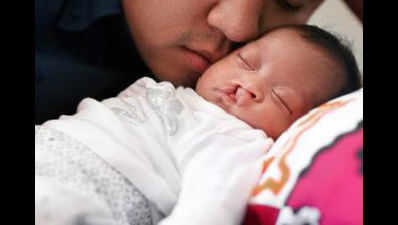- News
- City News
- chennai News
- They break jaws to bring a smile
Trending
This story is from October 27, 2016
They break jaws to bring a smile
In 1966, when Swiss dental surgeon Hugo Obwegeser told a patient he was going to break his jaw, the man was terrified. Five decades on, the jaw-splitting procedure is the basis of correcting severe facial malformations.

Representative photo. (Getty Images)
Chennai: In 1966, when Swiss dental surgeon Hugo Obwegeser told a patient he was going to break his jaw, the man was terrified. Five decades on, the jaw-splitting procedure is the basis of correcting severe facial malformations.
After several decades in a career involving helping cleft lip patients smile easy, Obwegeser and his peers from across the world were felicitated for their contribution here on Wednesday.
In a video address from his Zurich home, Obwegeser said the most fascinating work for him was cleft lip and cleft palate. "Because I was able to produce normal faces and improve speech in patients who had no chance for her life before (sic)," said the 95-year-old, a legend in oral and maxillofacial surgery. Orofacial clefting, used to describe a range of abnormalities, involves structures around the oral cavity extending to facial structures resulting in oral, facial and craniofacial deformities. Affected children have a range of functional as well as aesthetic problems including feeding difficulties at birth, swallowing, breathing, hearing and speech difficulties.
In India, 27,000-33,000 babies are born with clefts every year. Although several NGOs have come to the aid of these infants, inequalities continue to exist, both in access to and quality of cleft care. These defects can be surgically repaired in childhood, but residual deformity due to scarring and abnormal facial development results in functional and psychosocial problems, having a prolonged, adverse influence on the health and social integration of affected individuals. Tracing the evolution of procedures to correct clefts, experts at the 10th world cleft lip palate and craniofacial congress said the field had come a long way but there was a lot to be done. Daniel M Laskin, 91, an oral and maxillofacial surgeon from US, recalled how patient care, in particular, had evolved. "One of the biggest hurdles we crossed was refining the process of administering anesthesia. In 1952, when I started out, we used to use gases, some of which did more harm to patients than good," he said people in developing countries need to be trained in corrective procedures instead of doctors being flown in.
After several decades in a career involving helping cleft lip patients smile easy, Obwegeser and his peers from across the world were felicitated for their contribution here on Wednesday.
In a video address from his Zurich home, Obwegeser said the most fascinating work for him was cleft lip and cleft palate. "Because I was able to produce normal faces and improve speech in patients who had no chance for her life before (sic)," said the 95-year-old, a legend in oral and maxillofacial surgery. Orofacial clefting, used to describe a range of abnormalities, involves structures around the oral cavity extending to facial structures resulting in oral, facial and craniofacial deformities. Affected children have a range of functional as well as aesthetic problems including feeding difficulties at birth, swallowing, breathing, hearing and speech difficulties.
In India, 27,000-33,000 babies are born with clefts every year. Although several NGOs have come to the aid of these infants, inequalities continue to exist, both in access to and quality of cleft care. These defects can be surgically repaired in childhood, but residual deformity due to scarring and abnormal facial development results in functional and psychosocial problems, having a prolonged, adverse influence on the health and social integration of affected individuals. Tracing the evolution of procedures to correct clefts, experts at the 10th world cleft lip palate and craniofacial congress said the field had come a long way but there was a lot to be done. Daniel M Laskin, 91, an oral and maxillofacial surgeon from US, recalled how patient care, in particular, had evolved. "One of the biggest hurdles we crossed was refining the process of administering anesthesia. In 1952, when I started out, we used to use gases, some of which did more harm to patients than good," he said people in developing countries need to be trained in corrective procedures instead of doctors being flown in.
End of Article
FOLLOW US ON SOCIAL MEDIA










